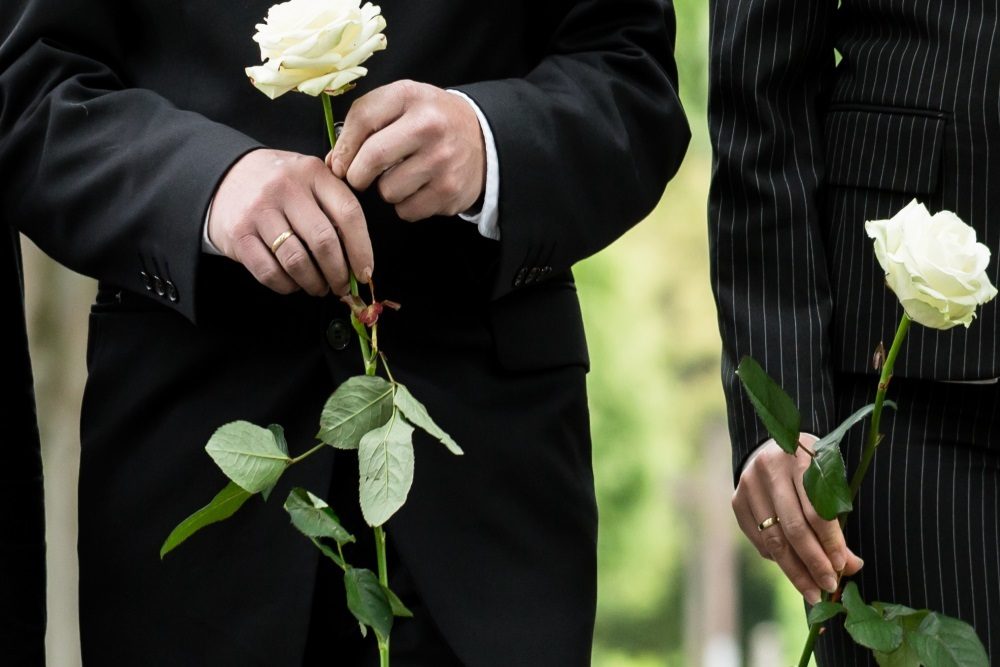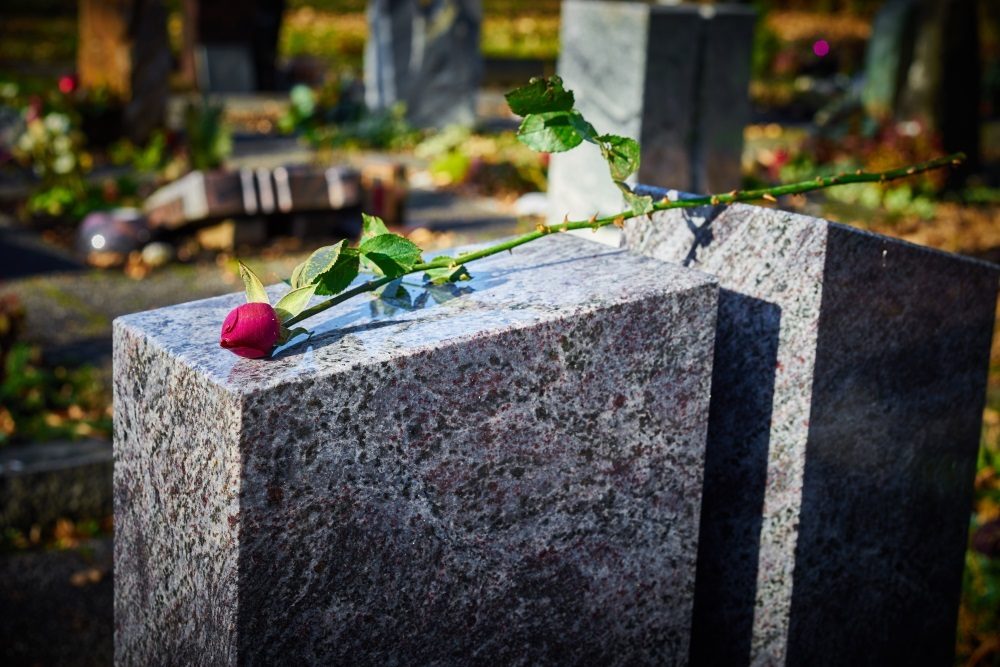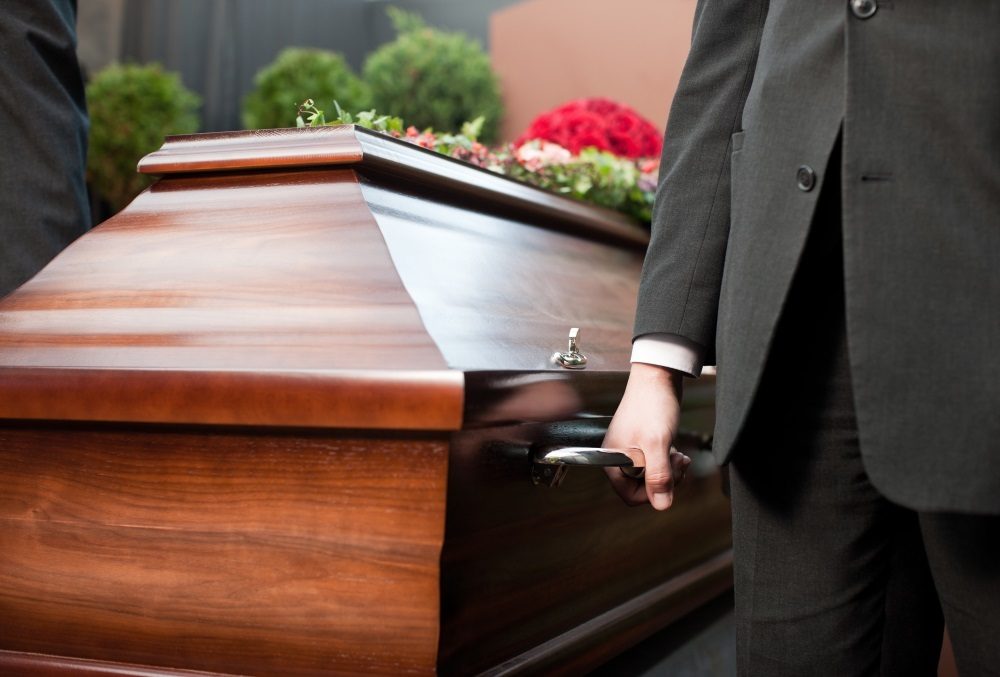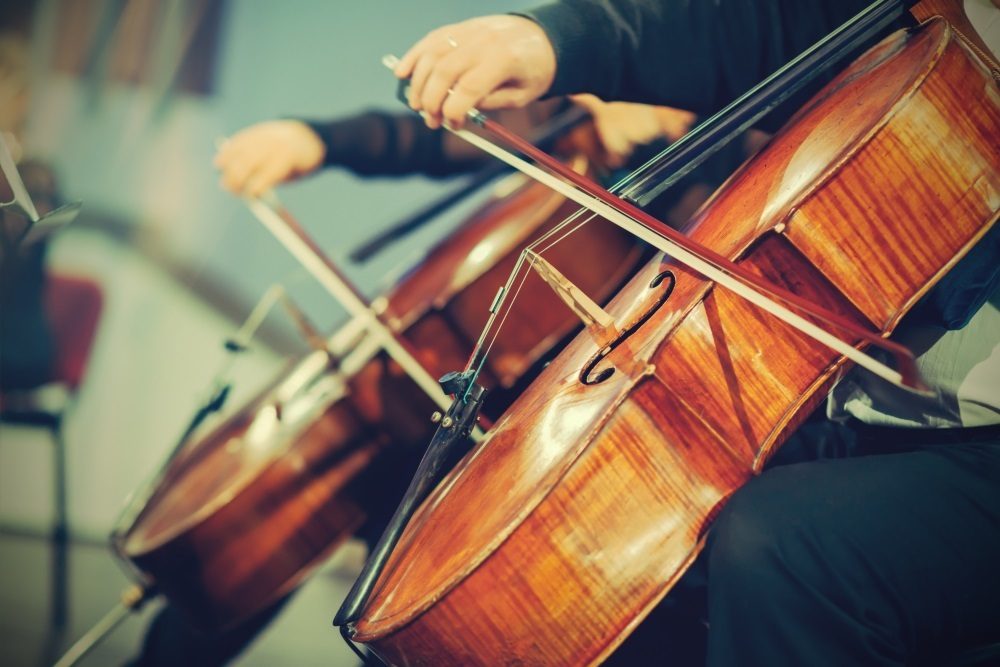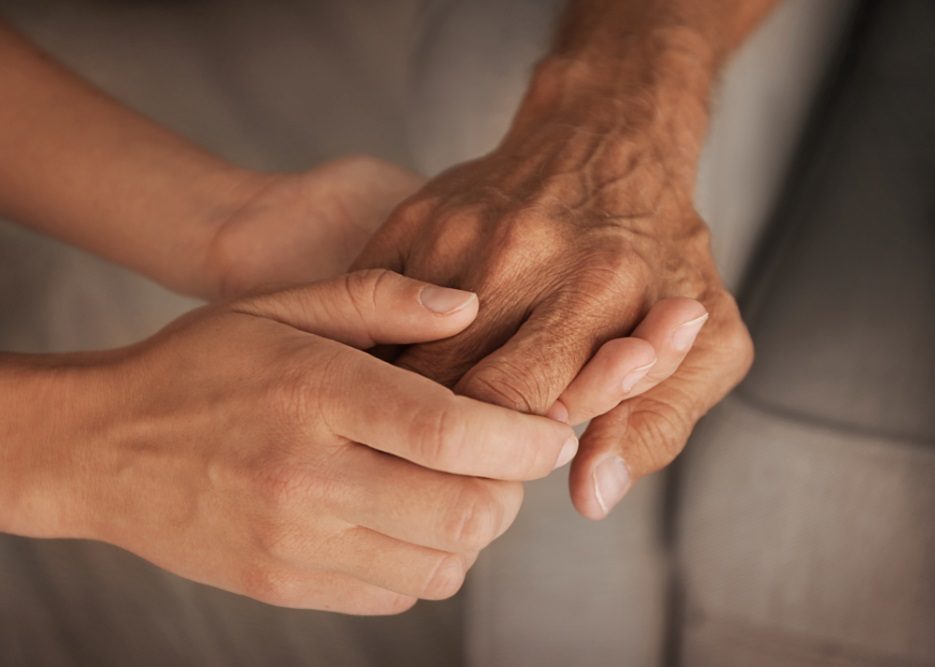
By Dr. Alan D. Wolfelt
Paradox 1: Families must say hello before they can say goodbye
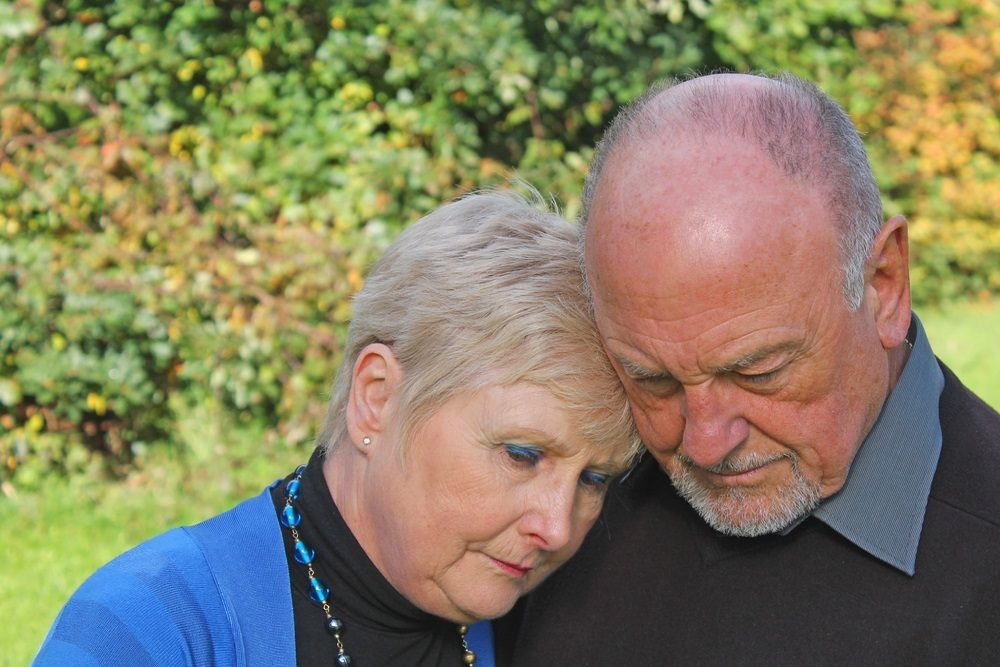
A paradox is a seemingly self-contradictory statement or situation that is in fact often true. The paradox of mourning we will consider together in this article might, at first glance, seem self-contradictory, but as I will reveal, it is actually a forgotten Truth with a capital T. It’s a Truth we must rediscover because it is essential to understanding how mourners begin to heal in the aftermath of significant loss.
Love inevitably leads to grief. You see, love and grief are two sides of the same precious coin. One does not – and cannot – exist without the other. They are the yin and yang of our lives. From the moment we are born, we say hello to love in our lives by seeking it out, by acknowledging it when it unfolds, by welcoming it and by nurturing it so that it will continue.
It is essential for those in funeral service to understand that we must also say hello to loss and grief in our lives. To be sure, we do not seek it out, but when it unfolds, we must acknowledge it. I would even say that we must welcome our grief. We must say hello to it. The funeral, in fact, is an essential step in saying hello. Yes, we must simultaneously “work at” and “surrender to” the grief journey. This in itself is a paradox. As grievers come to know this paradox, they can, very slowly, discover the soothing of their souls.
Saying Hello to the Physical Reality of Death
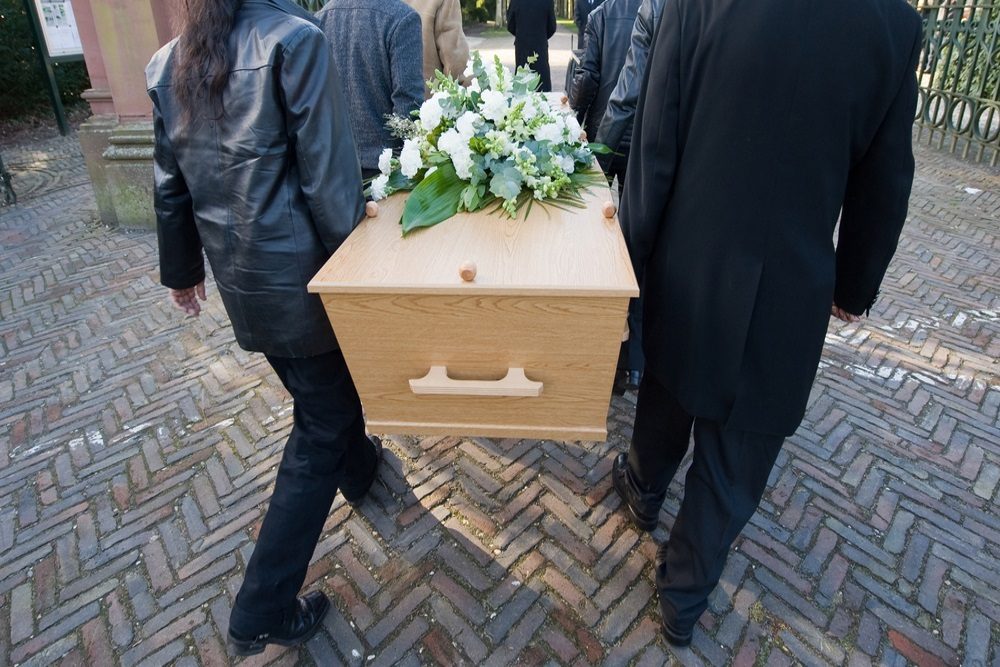
In centuries past, our actions and rituals made it clear that we understood the necessity of saying hello to the reality of death. We have always – even from the time of Neanderthals, anthropologists suggest – honored the body of the person who died right up until the moment it was laid in its final resting place. The body of the person who died was the focal part of the entire funeral process – from the procession into the church to the procession out of the church to the procession to the cemetery through to the burial. The body never for a moment left the family’s sight – or heart.
In recent decades, as you know, the trend has been toward body-absent funeral ceremonies. Today, bodies are often cremated immediately, often without loved ones having spent time with them or even having looked at them beforehand. While historically we understood the essential, universal need to honor and affirm the life of the person who died with the body present throughout the entire funeral process, now the guest of honor is often missing in action.
People in funeral service understand that when you watch someone die, care for a dead body and/or visit the body of a loved one in an open casket, you are saying hello to the reality of that person’s death. In fact, I believe the more time families spend bearing witness to and even feeling the fact of a death with their own two hands, the more deeply they are able to acknowledge the reality of the death. That is why it is so critical to build in as many sacred opportunities as possible for families (when culturally appropriate) to spend time with the body before cremation or burial, even if there will not be a public visitation.
Saying Goodbye

Grief never truly ends because love never ends. People do not “get over” grief because they do not “get over” the love that caused the grief. After someone we love dies, we step through a doorway into a new reality, but we never fully close and lock the door behind us. People often think of the funeral as a time of saying goodbye to the person who died, but that’s largely inaccurate. You see, the funeral takes place so soon after the death that grief and mourning have just started. At that point, grieving families are just saying hello to their grief. At the time of disposition, on the other hand, they are also saying goodbye to the precious body of the person who died, and as I mentioned above, it is so important, when culturally appropriate, to foster and encourage spending time with the body in the days or hours before disposition.
Eventually, though, people who find ways to say hello to their loss, grief and mourning, over time and with the support of others, will more and more come to find that they have ultimately said a kind of final goodbye to the person who died. No, they do not forget, get over, resolve or recover from the death – there is never true “closure,” but they become reconciled to it. Reconciliation literally means “to make life good again.” In reconciliation, they come to integrate the new reality of moving forward in life without the physical presence of the person who died. With reconciliation comes a renewed sense of energy and confidence and a capacity to become re-involved in the activities of living. There is also an acknowledgment that pain and grief are difficult yet necessary parts of life.
Along the road to reconciliation, if they are openly, honestly and actively mourning, they will be saying lots of hellos. Oh hello, this death. Oh hello, this thought. Oh hello, this feeling. Oh hello, this change. Oh hello, this me. Oh hello, this doubt. Oh hello, this new belief. But they will also be saying many goodbyes. Goodbye, this voice, this kiss, this body. Goodbye, this routine. Goodbye, this me. Goodbye, this belief. Goodbye, this ever-present pain. Their hellos and goodbyes will overlap one another, with more hellos needed at the start of the journey and more goodbyes in the later days.

Still, remember that saying goodbye is not the same as “closure.” As I said, you never fully close the door on the love and grief you feel for someone who has died. But you can achieve a sense of peace. The days of intense and constant turmoil can be replaced by serene acceptance as well as days of love, hope and joy.
In funeral service, you can strive to help create as many hello opportunities for families as possible. The more they are educated about and engaged in the entire process and the more they avail themselves of all of the possible elements of ritual, the more they will be saying hello to their normal and necessary grief. In turn, this will help set them on the path to continuing to embrace and openly mourn their many thoughts and feelings in the coming weeks and months.
I challenge you to think of the funeral as an opportunity for families to say hello as much as or more than an opportunity to say goodbye. Embracing this essential paradox has the power to transform your customer service strategy and your funeral home’s role in your community.
To read Part 2 of this article, visit this page: The Paradoxes of Mourning Part 2 of 3: The Dark Night of the Soul
To read Part 3 of this article, visit this page: The Paradoxes of Mourning Part 3 of 3: Backtracking on the Route to Healing
About the Author:
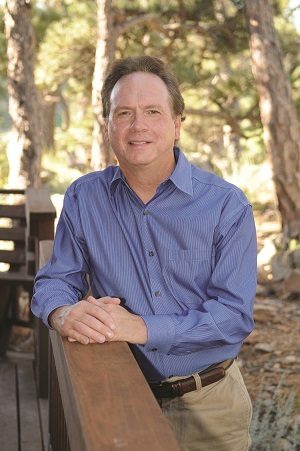 Dr. Alan Wolfelt is a noted author, educator, grief counselor. Dr. Wolfelt believes that meaningful funeral experiences help families and friends support one another, embrace their feelings, and embark on the journey to healing and transcendence. Recipient of the Association of Death Education and Counseling’s Death Educator Award, Dr. Wolfelt presents workshops across the world to grieving families, funeral home staffs, and other caregivers. He also teaches training courses for bereavement caregivers at the Center for Loss and Life Transition in Fort Collins, Colorado, where he serves as Director. Dr. Wolfelt is on the faculty of the University of Colorado Medical School’s Department of Family Medicine. He is also the author of many bestselling books, including Understanding Your Grief, The Mourner’s Book of Hope, Creating Meaningful Funeral Ceremonies, and The Paradoxes of Grief: Healing Your Grief With Three Forgotten Truths, upon which this series is based. For more information, visit www.centerforloss.com
Dr. Alan Wolfelt is a noted author, educator, grief counselor. Dr. Wolfelt believes that meaningful funeral experiences help families and friends support one another, embrace their feelings, and embark on the journey to healing and transcendence. Recipient of the Association of Death Education and Counseling’s Death Educator Award, Dr. Wolfelt presents workshops across the world to grieving families, funeral home staffs, and other caregivers. He also teaches training courses for bereavement caregivers at the Center for Loss and Life Transition in Fort Collins, Colorado, where he serves as Director. Dr. Wolfelt is on the faculty of the University of Colorado Medical School’s Department of Family Medicine. He is also the author of many bestselling books, including Understanding Your Grief, The Mourner’s Book of Hope, Creating Meaningful Funeral Ceremonies, and The Paradoxes of Grief: Healing Your Grief With Three Forgotten Truths, upon which this series is based. For more information, visit www.centerforloss.com
Printed by permission of Dr. Alan D. Wolfelt, all rights reserved.

